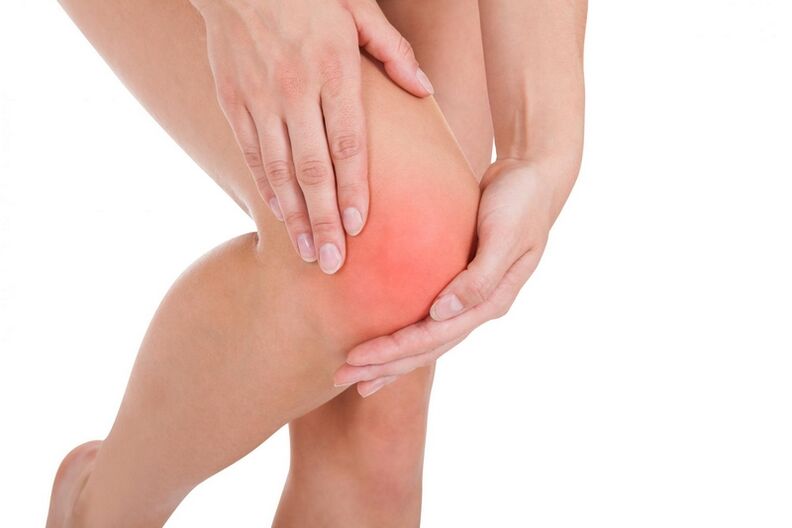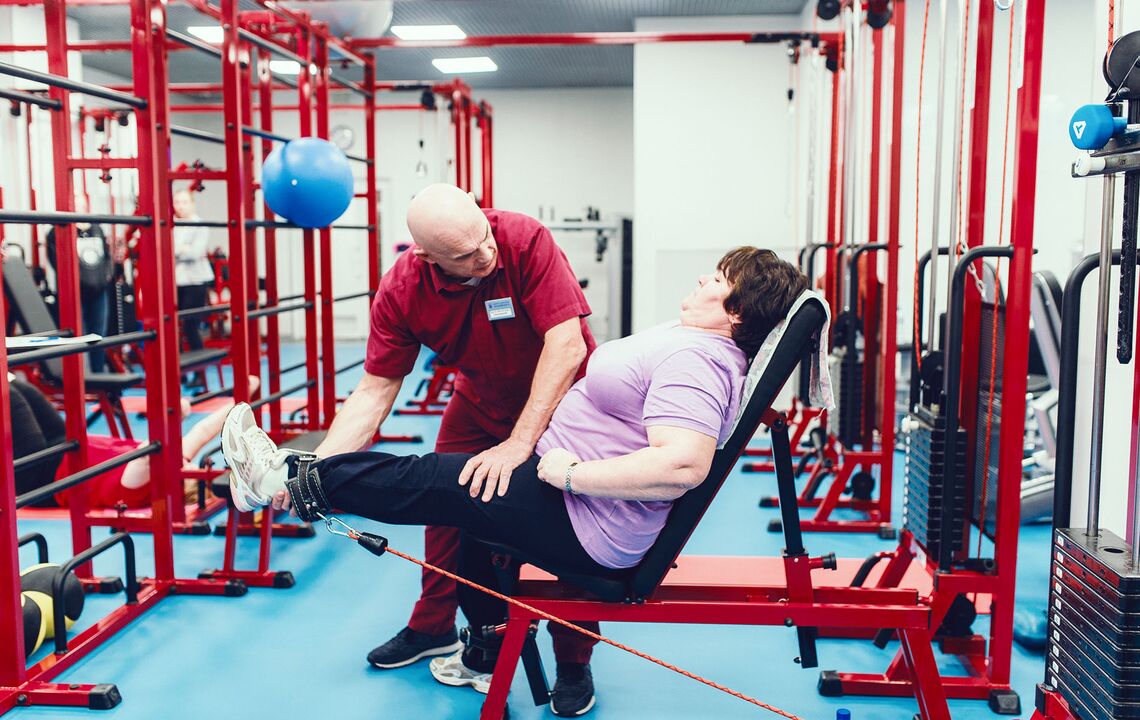Knee joint osteoarthritis is one of the most common diseases in the musculoskeletal system and, unfortunately, the most common cause of loss of mobility, defects, and sometimes defects.With arthrosis, the cartilage that symbolizes the articular surface is not affected, causing the joints to stop functioning properly and causing pain.
Formally, the disease is called "deformation of osteoarthritis";Another name is gonarthrosis (from ancient Greek "goni" - knee).Knee joints are the largest joints in the human body and most often affected by osteoarthritis.More commonly, the disease affects the hip and ankle joints.
How does gonarthrosis take place?
Usually, healthy cartilage is elastic and smooth, it covers bone moving areas and allows them to slide.Prone also softens the pressure received by the bone while walking or exercising.

When the cartilage is destroyed (this is how the arthrosis is real), the upper layer of the elastic tissue becomes thinner.Sometimes the cartilage removes, tears arise - this is how the joints lose "shock absorber" and "bearings".Bone -About begins to rub each other, the joints swell, gradually lose their normal appearance, and pain arises.
Causes of gonarthrosis factor and risk
Deformans osteoarthritis is more common in older, overweight women, but this does not mean that young and physically active people do not experience this pathology.Sometimes the development of the disease is provoked by heavy physical labor or excessive pressure in the gym.
Here are far from the complete list of the causes of knee joint arthrosis:
- Sports injuries - meniscal injuries, bone fractures and dislocation;
- the process of inflammation in joint and joint disease;
- Metabolic disorders - some diseases lead to the formation of intra -articular deposits;
- excessive pressure on the joints, including prolonged work or physical work related to weight lifting;
- Uneven load on the joints due to foot curvature - arthrosis shows itself faster in too many areas.
Much depends on the gene - one may have a hereditary tendency for knee joint arthrosis.In such people, the genes responsible for the development and stability of cartilage tissue are interrupted.
There are several factors that increase the risk of gonarthrosis:
- Weight gain.Due to increased load on the joints, cartilage tissue wears faster;
- over 40 years old.Most people of this age have reduced physical activity.Due to physical inactivity, muscle atrophy, weak muscle tissue does not supply the joints properly, and the risk of cartilage damage increases.
Symptoms of arthrosis
Knee joint osteoarthritis is not a disease that can appear suddenly.It makes himself known for a strong first: it all starts with a little pain in the knee while walking.Pain can increase if you need to go up or down the stairs.As a rule, the knee hurts at the beginning of the movement, then the pain disappears and returns with a prolonged burden on the joints.
If you ignore these symptoms and do not consult your doctor about them, the disease will begin to develop.Then the pain will change from passing to continuous, the knee will start to hurt more even when resting, and will swell.When the cartilage decreases, the overall movement of the joints will be limited.
Some people realize that the knees are "responding" to changes in the weather.This is true - the ending of the nerves in the joint capsule is sensitive to changes in atmospheric pressure.
The following symptoms are a characteristic of gonarthrosis:
- Knee pain while moving and walking;
- Morning stiffness in the knee joint, when various movements are minimal;
- knee swelling;
- Dry and coarse sounds when moving - this sound occurs due to the articular surface friction.
As the disease progresses, the symptoms change:
- The pain will bother you even when resting;
- The joints become defective and lose their function;
- Due to knee deformation, Gait will change.
Degrees of gonarthrosis
There are 3 stages of development of knee joint arthrosis.
First degreeDisease - almost without symptoms.It starts with the first manifestation of the disease - almost painless, for example, fatigue in the foot - and lasts until the first bone defect occurs.If the knee has changed due to synovitis - that is, due to the accumulation of fluid in the joints, but the intra -articular cartilage is not damaged, the disease is still at stage 1.

Degree -2characterized by progressive changes in bone tissue.Externally, the knees may look the same as at level 1 - defective and increase in size.Increased pain: In addition to pain that occurs during movement, crunching (crunching) in the affected knee is added.The joints become less portable, it becomes difficult to drop and walk on uneven surfaces.
The degree of -3The level of gonarthrosis is the most painful.At this stage, almost no cartilage tissue is left, and if the disease is severe, the bone can grow together.Then the joints become completely moving, and the person just needs to move with the help of a stick or a stick.Usually at this time doctors decide on the endoprostetics of the damaged joints.
Important: Only a doctor can determine the exact stages of the disease.Sometimes, with mild symptoms, the disease seriously affects the cartilagin membrane - therefore, for the right diagnosis, additional studies are usually conducted:
- Radiography - to see if the cartilaginus surface is defective and under what conditions together;
- CT or MRI - for a more detailed study.
How is gonarthrosis diagnosed and treated?
The first thing to keep in mind is that timely diagnosis and early treatment will help stop the disease at first.Therefore, the appearance of the first discomfort in the knee joint is a good reason to visit a doctor and undergo an examination.
Doctors make an osteoarthritis diagnosis based on not only medical history, complaints and conditions during the knee joint.The results of additional studies also play an important role - they are often prescribed to explain the level of gonarthrosis and the severity of the disease.
To accurately diagnose knee joint arthrosis, doctors usually prescribe:
- Radiography.If the pathological process has started in the knee - for example, calcium crystal deposits or bone tumors have appeared in a joint capsule - these changes will be seen in the pictures.Doctors most often prescribe X-ray examinations, but without a thorough examination of the knee joint, its mobility and the muscle condition that supports it, the picture is incomplete;
- Ultrasound - it can be used to evaluate the state of the soft tissue surrounding and compiling joints.Ultrasound complements radiographic results so that doctors can see changes not only in bone structure, but also in tissues;
- MRI - Magnetic resonance imaging.MRI is prescribed for knee pain complaints if the doctor suspects damage to the meniscus, ligaments or tendons;
- Arthroscopy is an invasive examination in which a joint cavity is inspected from the inside of the camera.The camera is inserted through a small incision on the skin;Through the same incision, doctors can perform small manipulation - for example, removing a broken cartilage, partially smoothing inequalities in cartilage tissue, etc.
Treatment of arthrosis is usually performed with medications, first trying to relieve pain, increases joint mobility and restoring the ability to move.Arthrosis causes irreversible changes in cartilage tissue - therefore, it is impossible to talk about complete healing.But it is possible to stop the development of the disease - and thus slow down the destruction of tissue.
Here's a standard treatment for gonarthrosis such as:
- local medicine - patches, creams, ointments and gels;
- painkillers;
- Anti-inflammatory drugs, especially non-steroids.Their use is considered to be a "gold standard" of medicine, but these drugs destroy the gastric mucosa;
- blockade and chondroprotectors - a drug whose effects only appear after long use;
- Rarely - physiotherapy and sanatorium treatment.
There are suggestions for wearing an orthopedic knee pad to support joints and reduce pain.But all of the methods listed above are the passive influence method on the function of the joints.
This treatment relieves only a few symptoms - neutralizing the pain, prevents the inflammation process, and others.The disease itself continues to develop, gradually destroying the joints.In the final stages of osteoarthritis, one loses not only the ability to work, but also the ability to move.In such cases, the joints need to be prosthetic - that is, the artificial structure must be inserted into the knee.Such surgical intervention does not pass without leaving a trace and imposing its own limitations - and thus reducing the quality of life.
The active influence of the joints has a completely different effect, when, using the body's own source, the muscle tone that supplies the joints with the blood and the nutrients is restored.Such treatment is most effective when performed under the supervision of a qualified and experienced doctor.
Treatment of gonarthrosis with kinesitherapy
Kinesitherapy, that is, movement therapy, activates the body's own power.Properly selected loads allow you to work effectively with the muscles needed and, by strengthening the muscle corset, improving the condition of the joints and cartilage.
Treatment with kinesitherapy begins with a comprehensive examination and, of course, myofascial test.A kinesitherapist studies the condition of the sore knee, analyzing the state of the muscle tissue, tendons and ligaments.Considering data from ultrasound, CT, MRI and radiography, gonarthrosis level is determined and therapeutic training programs are provided.
Classes are conducted on multi -function simulators - proprietary simulators with special designs.Exercises are done in such a way to avoid excessive pressure on the joints and only function on the muscles that need to be strengthened and developed.In the early stages, the patient was prescribed gymnastics together - it consisted of exercises on heavy mats.
The therapeutic effects of kinesitherapy are determined by better blood circulation and lymphatic drainage.The cartilage receives more nutrition, the development of arthrosis slows down to the complete stop, and the biomechanics of the articular joints are fully restored.
Serious illnesses such as knee joint arthrosis cannot be ignored.The best way to prevent it is to lead a healthy lifestyle: a balanced diet, physical activity.But if the problem with the joints has begun, you should not wait for serious warning signs - in the first symptom, you should seek the help of a qualified doctor.


























